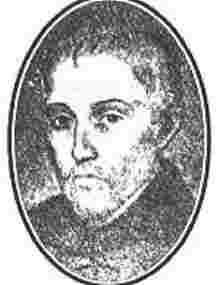Related Research Articles

Vespers is a liturgy of evening prayer, one of the canonical hours in Catholic, Eastern Orthodox, Oriental Orthodox, and Lutheran liturgies. The word for this prayer time comes from the Latin vesper, meaning "evening".

Tomás Luis de Victoria was the most famous Spanish composer of the Renaissance. He stands with Giovanni Pierluigi da Palestrina and Orlande de Lassus as among the principal composers of the late Renaissance, and was "admired above all for the intensity of some of his motets and of his Offices for the Dead and for Holy Week". His surviving oeuvre, unlike that of his colleagues, is almost exclusively sacred and polyphonic vocal music, set to Latin texts. As a Catholic priest, as well as an accomplished organist and singer, his career spanned both Spain and Italy. However, he preferred the life of a composer to that of a performer.

Sir John Milford Rutter is an English composer, conductor, editor, arranger, and record producer, mainly of choral music.
A sequence is a chant or hymn sung or recited during the liturgical celebration of the Eucharist for many Christian denominations, before the proclamation of the Gospel. By the time of the Council of Trent (1543–1563) there were sequences for many feasts in the Church's year.
The Benedicite is a canticle that is used in the Catholic Liturgy of the Hours, and is also used in Anglican and Lutheran worship. The text is either verses 35–65 or verses 35–66 of The Song of the Three Children. Newer versions often omit the final verse, and may reduce the number of occurrences of the refrain "sing his praise and exalt him for ever".

A Christian child's prayer is Christian prayer recited primarily by children that is typically short, rhyming, or has a memorable tune. It is usually said before bedtime, to give thanks for a meal, or as a nursery rhyme. Many of these prayers are either quotes from the Bible, or set traditional texts.
Jacques Berthier was a French composer of liturgical music, best known for writing much of the music used at Taizé.

"Lauda Sion" is a sequence prescribed for the Roman Catholic Mass for the feast of Corpus Christi. It was written by St. Thomas Aquinas around 1264, at the request of Pope Urban IV for the new Mass of this feast, along with Pange lingua, Sacris solemniis, and Verbum supernum prodiens, which are used in the Divine Office.
Malcolm Archer is an English composer, conductor and organist. He was formerly Organist and Director of Music at Bristol Cathedral, at Wells Cathedral and at St Paul's Cathedral and Director of Chapel Music at Winchester College.
Girolamo (Hieronimo) Cavazzoni was an Italian organist and composer, son of Marco Antonio Cavazzoni. Little is known about his life except that he worked at Venice and Mantua, and published two collections of organ music. These collections only contain music written before about 1549, but are of high quality, and established the traditional form of imitative ricercars and canzonas.

O filii et filiae is a Christian hymn celebrating Easter. It is attributed to Jean Tisserand, a Franciscan friar.
Russell Schulz-Widmar is a composer, author, and conductor, and a former Professor of Liturgical Music at the Seminary of the Southwest in Austin, Texas. For much of his career he lived in Austin, Texas and upon retirement he has divided his time between Berlin, Germany and Dallas, Texas. He is married to Hubertus Schulz-Wilke.

"Sacris solemniis" is a hymn written by St. Thomas Aquinas (1225–1274) for the feast of Corpus Christi. The strophe of Sacris solemniis that begins with the words "Panis angelicus" has often been set to music separately from the rest of the hymn. It appears about 1768 in the iberian musical form Vilancete/Villancico at Francesc Morera's "Si el grano divino". Most famously, in 1872 César Franck set this strophe for voice (tenor), harp, cello, and organ, and incorporated it into his Messe à trois voix Opus 12. The hymn expresses the doctrine that the bread and wine are changed into the Body and Blood of Christ. In the Roman Catholic tradition the concept of transubstantiation is presented as an explanation of how this change happens.

"Lasst uns erfreuen herzlich sehr" is a hymn tune that originated from Germany in 1623, and which found widespread popularity after The English Hymnal published a 1906 version in strong triple meter with new lyrics. The triumphant melody and repeated "Alleluia" phrases have supported the tune's widespread usage during the Easter season and other festive occasions, especially with the English texts "Ye Watchers and Ye Holy Ones" and "All Creatures of Our God and King".

Lucis Creator Optime is a 5th-century Latin Christian hymn variously attributed to St Gregory the Great or Saint Ambrose. It takes its title from its incipit.
References
- ↑ Worship II: A Hymnal for Roman Catholic Parishes. Chicago, IL: G.I.A. Publications, Inc. 1975. p. 1.
- ↑ The Hymn Book: Containing a Collection of the Most Popular Catholic Hymns: Arranged for the Use of the Sunday Schools and Catholics Throughout the United States. Philadelphia, PA: Peter F. Cunningham. 1854. pp. 59–61.
- ↑ "Spirit And Song". OCP. Archived from the original on 30 June 2013. Retrieved 26 May 2013.
- ↑ The Saint Augustine Hymnal: Publisher=ILP Music, www.ILPmusic.org.